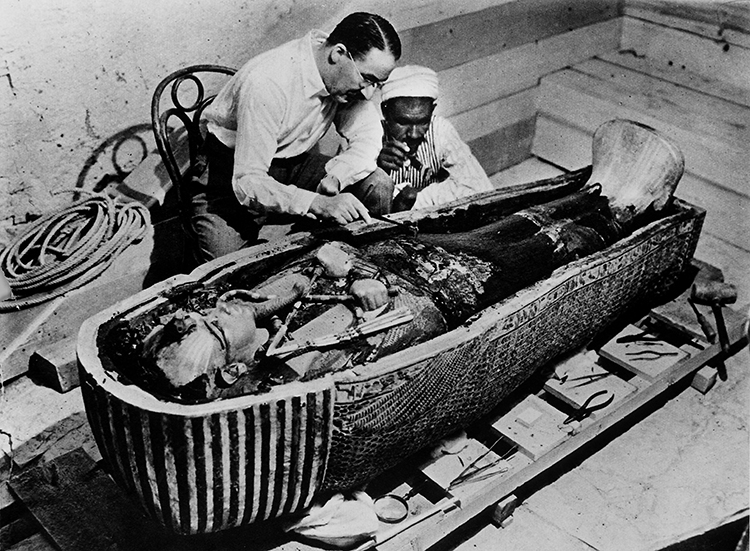Current Events Lesson Plan: May 26-June 8, 2016
Current Event:
Scientists recently discovered that an iron-bladed dagger from the tomb of Tutankhamun, a famous king of ancient Egypt, had an extraterrestrial origin. An analysis of the metal blade found that the iron most likely came from a meteorite. This rare source of iron was highly prized by the ancient Egyptians. A special hieroglyphic describes such iron as “metal from heaven.” Although people in the ancient world worked copper, bronze, and gold beginning about 4000 B.C., iron working developed much later. Historians generally mark the beginning of the Iron Age at 1200 B.C., long after Tutankhamun’s death. Iron deposits are also uncommon in and around Egypt, and iron tools or weapons from ancient Egypt are extremely rare. Scholars have long suspected that the iron used to fashion precious objects found in ancient Egyptian tombs may have come from meteorites. In the latest study, scientists analyzed the dagger and found that the blade was composed of iron, nickel, and cobalt. The relative amounts of these elements in the dagger were remarkably similar to those found in iron-rich meteorites.

Archaeologist Howard Carter works with Tutankhamun’s mummy in 1922. Among the many riches from Tut’s tomb was a rare iron-bladed dagger probably made from the metal of a meteorite. CREDIT: © Time & Life Pictures/Getty Images
Objective:
Tutankhamun served as king of Egypt from about 1332 B.C. until his death around 1322 B.C. His original name was Tutankhaten, meaning the living image of Aten or the life of Aten is pleasing. Akhenhaten, Tutankhamun’s father had made Aten the only god of Egypt. He wanted Egyptians to stop worshiping the chief sun god Amun and other traditional gods. But many Egyptians, including the powerful priests devoted to Amun, rejected the worship of Aten. About four years after becoming king, Tutankhaten took the name Tutankhamun and restored Egypt’s old religion. Tutankhamun’s reign was unimportant, but interest in him began in 1922, when the British archaeologist Howard Carter discovered his tomb. The tomb had not been opened since ancient times and still contained most of its treasures. It is the only tomb of an ancient Egyptian king to be discovered almost completely undamaged. Among the items discovered were luxurious chests, thrones, clothing, chariots, bows and arrows, swords, daggers, shields, statues of Tutankhamun and many Egyptian gods, figures of animals, and storage jars containing precious oils. The ancient Egyptians believed in a life after death, called the afterlife. They had their favorite possessions and practical objects buried with them for use in the afterlife. The Behind the Headlines news story and related World Book articles explore many facets of ancient Egypt.
Words to know:
Discussion Topics:
1. Ask your students to name some ancient civilizations besides the Egyptians. (Students might say the Assyrians, Babylonians, Celts, Chinese, Greeks, Persians, Phoenicians, Romans.)
2. Ask your students what they know about ancient Egypt. (Students might say that ancient Egypt depended on the Nile River; the ancient Egyptians worshiped many gods and goddesses; the ancient Egyptians built pyramids as tombs for their rulers; the ancient Egyptians used hieroglyphics to write.)
3. Ask your students if they would rather live in ancient Egypt (or any other ancient civilization) or in modern times. Have them explain why.
4. Ask your students to use World Book’s Timelines feature to view or add to the History of Ancient Egypt timeline. (Students may wish to use the “History” section of World Book’s “Egypt, Ancient” article for help.)


